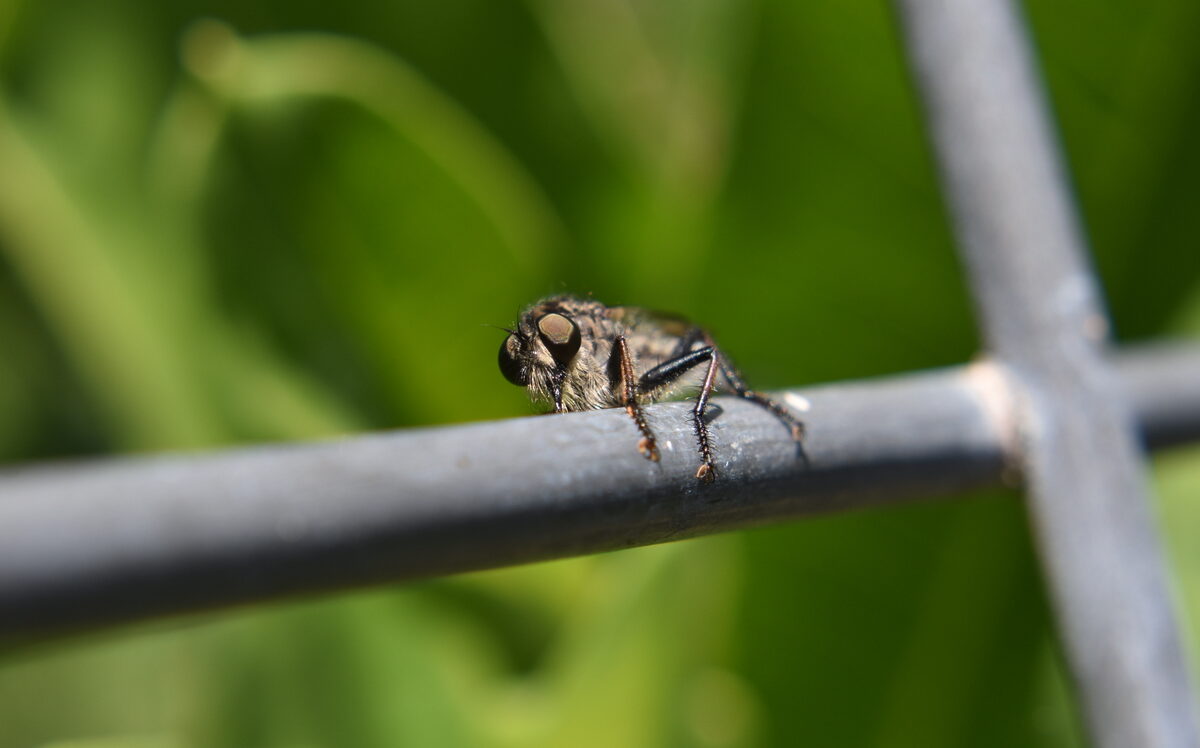
Most people do not like flies — and with good reason. Flies are dirty, annoying pests and can transmit diseases. Flies are insects of the order Diptera, a Greek word meaning two wings. The possession of a single pair of wings distinguishes flies from most other winged insects that possess two pairs. More than 150,000 species of flies have been identified, and they exist on every continent except Antarctica.
So first the bad news. Several species are home to Long Island and quite familiar to us, including but not limited to house flies, blow flies, black flies, hover flies, cluster flies, deer flies, drain flies, fruit flies and fungus gnats. Mosquitoes are also classified as flies!
Avoid the following sources that draw flies in their repugnant (to humans) roles for reproduction. For instance, the house fly, musca domestica, so called because it has adapted to coexist with human activities, is considered a “filth fly” along with the blow fly, including blue and green bottle flies and the black fly. All are drawn to garbage, decaying matter, and dead animals, where they both feed and lay their eggs. The eggs turn into larvae, also known as maggots, which feed on organic material and then transform into pupa from which the adult flies emerge. These flies pick up germs on their legs and mouths while crawling on garbage, and other decaying matter, and then transfer these germs to food and food preparation surfaces.
Fruit flies, drain flies and fungus gnats are smaller filth flies. Fruit flies are attracted to sweet or fermented liquid in addition to ripening/rotting fruit.
Drain flies lay their eggs in the muck that has accumulated in floor, sink and toilet drains.
The larvae of fungus gnats live in moist places where their food, fungus, grows. So, it is no wonder that flies do not endear themselves to most people — spreading diseases and annoying us with their buzzing and settling on our skin to bite or seek fluids.
The good news is that flies play a most important role in our ecosystems. In addition to being an important part of the food chain, flies are the second largest group of pollinators after the Hymenoptera (bees, wasps, sawflies and ants). Unlike bees, which forage close to their hive or nest, flies do not have to provide pollen for their young and can roam more widely carrying pollen much further. As pollinators, flies have other advantages over bees: some forage earlier and later in the day, they tolerate a wider range of temperatures and are active when it is too cool for bees; and they will be out and about even in the wet and windy weather that keeps bees at home.
Can you have a favorite fly? Yes. Hover flies, also known as flower flies or syrphid flies, play a major role not only in pollination but also in pest control. They are not filth flies: They do not breed in decaying matter, but rather lay their eggs on or near aphid colonies. The larvae hatches and can be found on the undersides of leaves eating aphids, thrips, scale, caterpillars, and mealy bugs. They are often mistaken for bees or wasps due to their coloration, but they do not sting or bite.
With insect populations decreasing and honeybees under pressure from multiple threats, the role of flies in pollinating the flowers of many fruits and vegetables has become even more important. Bees get most of the credit in pollination, but the role of flies is underappreciated. Flies play several other roles in the ecosystem: They are decomposers, scavengers, contributors to nutrient cycling and help to control populations of other organisms. While flies are often seen only as pests, humans must understand that flies are a vital part of the natural world.
Anne Algierie is a member of the Westhampton Garden Club Conservation Committee.